Cottage Garden Border Layouts 101: All You Need to Know
Cottage garden borders are characterized by their informal, natural beauty, combining a variety of plants to create a lush and vibrant landscape.
This article covers everything from plant selection to design tips, ensuring you can create and maintain your own charming cottage garden border.



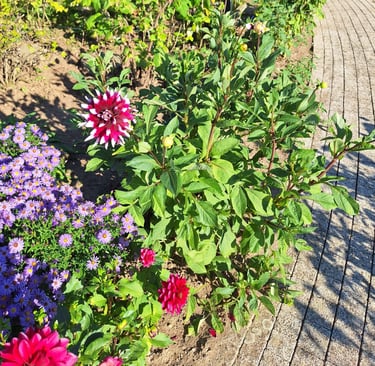


Understanding Cottage Garden Borders
Cottage gardens are characterized by a mix of perennials, shrubs, and sometimes even vegetables and herbs, all growing together in a lush, informal way.
The key to a successful cottage garden border is diversity. When we experimented with different layouts, we found that combining plants of varying heights, colors, and textures creates the most visually appealing and dynamic borders.
The goal is to create a space that feels both full and layered, with taller plants at the back and shorter ones at the front, allowing each to shine.
Key Elements of Cottage Garden Borders
Plant Selection: Choosing the right plants is crucial. We observed that traditional cottage garden plants, such as roses, delphiniums, and foxgloves, work best for achieving that classic look. However, incorporating a variety of other plants like lavender, hollyhocks, and daisies can add depth and interest.
Layout and Structure: While the cottage garden style is informal, some structure is still necessary to prevent it from becoming chaotic. We found that creating a basic framework with a few structural plants or shrubs helps anchor the garden. Paths or stepping stones can provide access and break up the space.
Seasonal Interest: A well-designed cottage garden border should look good throughout the year. When planning your layout, consider how the garden will change with the seasons. We recommend including a mix of early bloomers like tulips and daffodils, summer stalwarts like roses and peonies, and late bloomers like asters and sedums to ensure continuous interest.
Color Schemes: Cottage gardens often feature a riot of colors, but it’s essential to think about how these colors work together. After trying different combinations, we discovered that sticking to a palette of complementary colors or contrasting bold hues works best. Soft pastels like pinks, blues, and purples are classic, but don’t be afraid to add some bright oranges, reds, or yellows for a pop of color.
Height Variation: To create depth and layers, arrange and companion plant your plants by height, with the tallest at the back, mid-height plants in the middle, and shorter plants at the front. When we experimented with plant placement, we found that this approach allows each plant to be seen and appreciated.
Natural Flow: One of the defining characteristics of a cottage garden is its natural, unstructured flow. Avoid rigid, straight lines. Instead, create curves and waves in your borders. We found that this not only adds to the garden’s beauty but also helps guide the eye through the space.
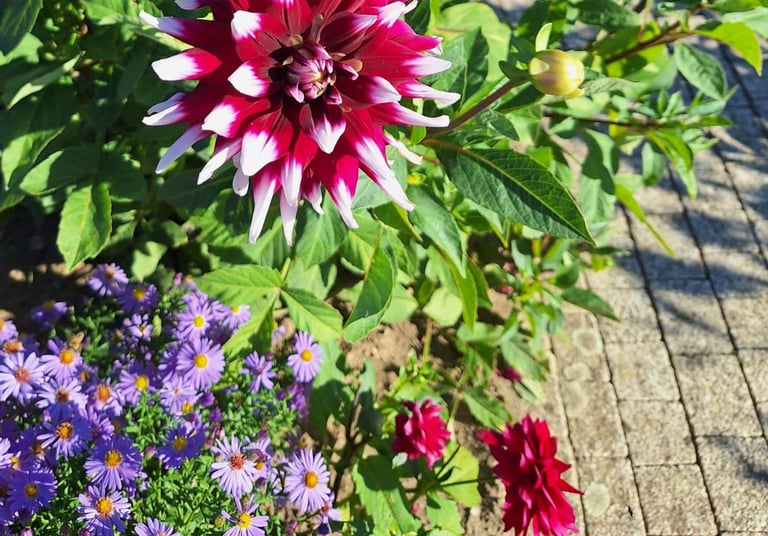

Step-by-Step Guide to Designing a Cottage Garden Border
Plan Your Layout: Start by sketching out your border on paper, noting the dimensions and where you want paths or focal points. When we planned our garden, we saw that a rough sketch helps in visualizing the final look.
Prepare the Soil: Cottage gardens thrive in rich, well-drained soil. Amend your soil with plenty of compost or organic matter to give your plants the best start. We experienced that properly prepared soil led to healthier, more vigorous growth.
Planting: Begin by planting the larger, structural plants first, followed by the mid-height perennials, and finish with the smaller, edging plants. Space them according to their mature size to avoid overcrowding. In our garden, careful spacing allowed each plant to flourish without competition.
Mulch and Water: After planting, add a layer of mulch to help retain moisture and suppress weeds. Water thoroughly to help your plants establish. We saw that consistent watering in the initial weeks led to stronger roots and better overall plant health.
Maintain Your Border: Cottage gardens require some maintenance to keep them looking their best. Deadhead spent flowers, prune back overgrown plants, and replant or divide perennials as needed. Regular maintenance, as we found, keeps the garden looking fresh and vibrant.
Tips & Tricks for a Successful Cottage Garden Border
Mix Annuals with Perennials: While perennials form the backbone of a cottage garden, annuals can add bursts of color and fill in gaps. We tried adding annuals like cosmos and zinnias and found they added a lovely, seasonal touch.
Incorporate Focal Points: Consider adding focal points such as a bench, birdbath, or trellis. In our garden, focal points not only provided interest but also drew the eye through the space.
Consider Fragrance: Include plants with pleasant scents like lavender, roses, or sweet peas. We noticed that a fragrant garden enhances the overall experience, especially in the evening when the scents are most intense.
Attract Wildlife: Cottage gardens are perfect for attracting pollinators like bees and butterflies. We included nectar-rich plants and found that it brought the garden to life with activity.
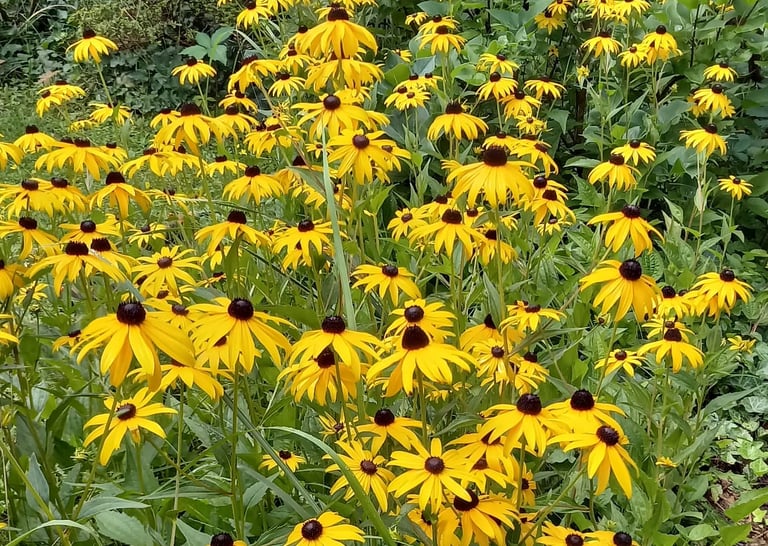




How to Choose the Right Plants for Your Border
The foundation of any cottage garden border lies in the careful selection of plants.
To achieve the quintessential cottage garden look, it's essential to choose a variety of plants that thrive together and complement each other.
The key is to select plants that are hardy, self-seeding, and capable of creating a lush, full appearance with minimal intervention.
Key Plants for Cottage Garden Borders:
Delphiniums: Tall spikes of blue, purple, or white flowers that add vertical interest.
Foxgloves: Biennials that offer tall, tubular flowers in shades of pink, purple, and white.
Roses: Particularly old-fashioned varieties like David Austin roses, known for their fragrance and classic beauty.
Lavender: Fragrant, low-growing herb that adds texture and a pop of purple.
Peonies: Large, lush blooms that provide a dramatic focal point in late spring.
Hollyhocks: Towering ornamental plants with colorful flowers, perfect for the back of the border.
Tips for Plant Selection:
Mix Perennials and Annuals: Combine long-lived perennials with self-seeding annuals for continuous color and interest.
Include Fragrant Plants: Scent is a key component of the cottage garden experience; include aromatic herbs and flowers.
Embrace Diversity: Don’t be afraid to mix different plant heights, colors, and textures to create a dynamic and engaging border.
Color Schemes: Creating Harmonious and Vibrant Borders
Color plays a crucial role in the design of a cottage garden border.
The goal is to create a harmonious blend of hues that flow naturally from one area to the next, while still allowing for the vibrant, somewhat chaotic feel that cottage gardens are known for.
Whether you prefer soft pastels or bold, vibrant colors, the key is to choose a palette that complements your home and surroundings.
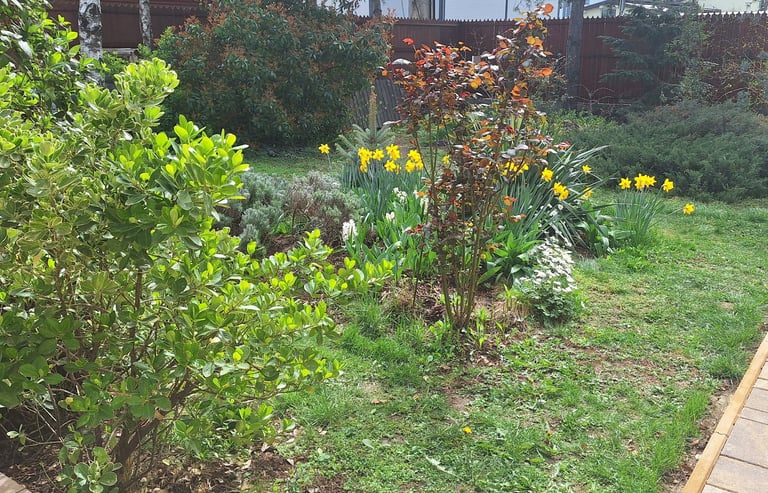

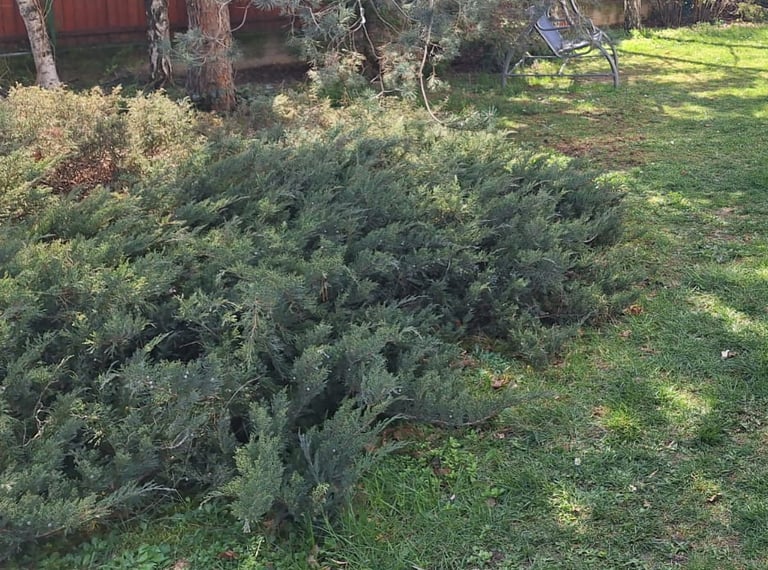

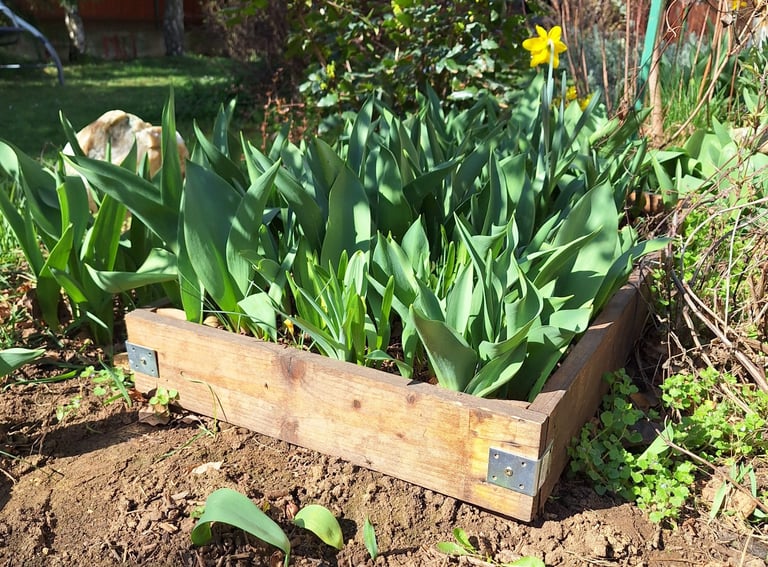







Wildlife Attraction: Creating a Garden for Pollinators
Cottage gardens are not only beautiful; they also serve as vital habitats for a variety of wildlife, especially pollinators like bees, butterflies, and birds.
By choosing the right plants and features, you can create a garden that supports biodiversity and enhances the natural environment.
Plants for Pollinators:
Lavender: Loved by bees, lavender provides nectar-rich flowers throughout the summer.
Echinacea (Coneflower): A magnet for butterflies, with bright, daisy-like flowers.
Buddleia (Butterfly Bush): Attracts butterflies and provides nectar late in the season.
Wildlife-Friendly Features:
Bird Baths and Feeders: Provide water and food for birds, adding life and movement to your garden.
Bee Hotels: Create a safe space for solitary bees to nest and reproduce.
Pond or Water Feature: Even a small pond can attract frogs, dragonflies, and other beneficial wildlife.
Seasonal Maintenance: Keeping Your Borders Beautiful Year-Round
Maintaining a cottage garden border requires regular attention, but with the right practices, you can keep your garden looking vibrant and healthy throughout the year.
Seasonal maintenance tasks are essential to ensuring that your garden thrives and continues to bring joy.
Spring:
Pruning: Cut back dead or damaged growth from the previous year to encourage new growth.
Feeding: Apply a slow-release, organic fertilizer to give your plants a nutrient boost as they start growing.
Weeding: Start the season with a thorough weeding to keep unwanted plants from taking over.
Summer:
Deadheading: Regularly remove spent flowers to encourage continuous blooming.
Watering: Ensure your plants receive adequate water, especially during dry spells.
Pest Control: Regularly keep an eye on your plants and look out for pests and diseases.

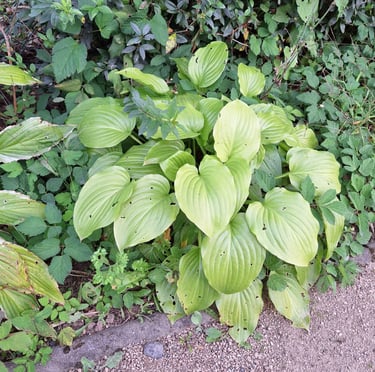

FAQ
How wide should a border be for a garden?
A garden border typically ranges from 2 to 4 feet wide, depending on the size of your garden and the plants you intend to grow. Wider borders allow for layering of plants, creating a fuller, more diverse look.
What are the colors for a cottage garden?
Cottage gardens are known for their vibrant and varied color palettes, often featuring soft pastels like pink, lavender, and white, mixed with bold shades of red, yellow, and blue. The key is a mix of colors that create a harmonious yet lively atmosphere.
What is the difference between a cottage garden and an English garden?
While both garden styles share a love for lush greenery and flowers, a cottage garden is more informal, with a charmingly disordered mix of plants.
An English garden, on the other hand, tends to be more structured and formal, with carefully planned layouts and symmetry.
How do you structure a cottage garden?
Structuring a cottage garden involves planting a mix of perennials, annuals, herbs, and shrubs in a seemingly informal but deliberate arrangement.
Start with taller plants at the back, gradually moving to shorter plants at the front, and allow plants to spill over paths and borders to achieve that natural, overflowing look.
How do you make a cottage garden on a budget?
Creating a cottage garden on a budget can be done by starting with inexpensive seeds or cuttings from friends, opting for hardy perennials that return year after year, and repurposing materials for garden structures.
Emphasize creativity and patience as your garden evolves over time, including your amazing cottage garden border layouts.

Sources
Nature and Sustainability uses only high-quality sources, including peer-reviewed studies, and other fact-dense and highly trusted sources to support the facts that we use in our articles. Please read our editorial policy to learn more about how we keep our content accurate, reliable, and trustworthy.
Cottage garden information: Creating a Low-Maintenance Cottage Garden (bhg.com), Cottage garden - Wikipedia
Borders: How to Plant a Border Garden that Will Add Color to Your Landscape (bhg.com), How to create a border / RHS Gardening
Plants: 20 Best Border Plants For Your Garden (southernliving.com), The 29 Best Edging Plants for Flower Beds and Walkway Borders (veranda.com)
Share this article:




Article By:
Helga has been fascinated with plants since childhood and is an avid gardening specialist who grows various plants. She has reviewed and fact-checked multiple articles on this website.

